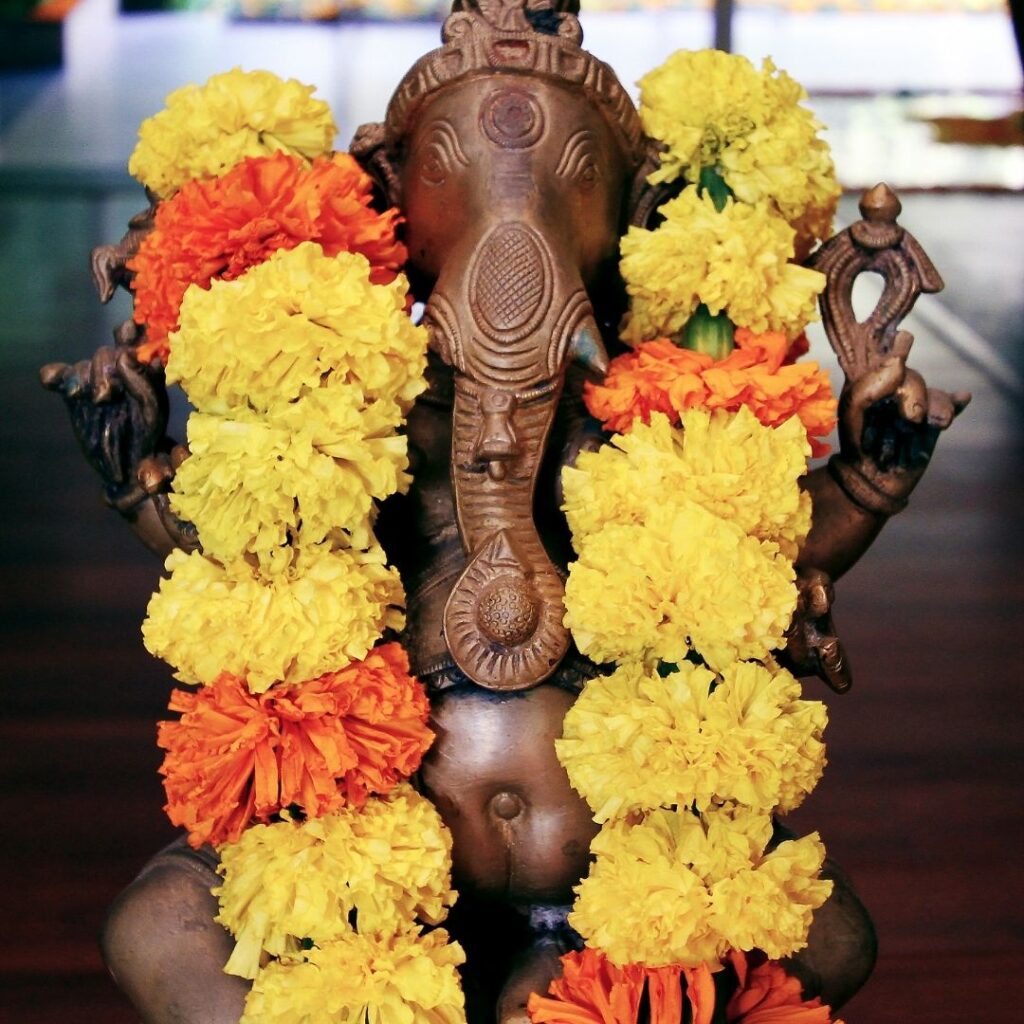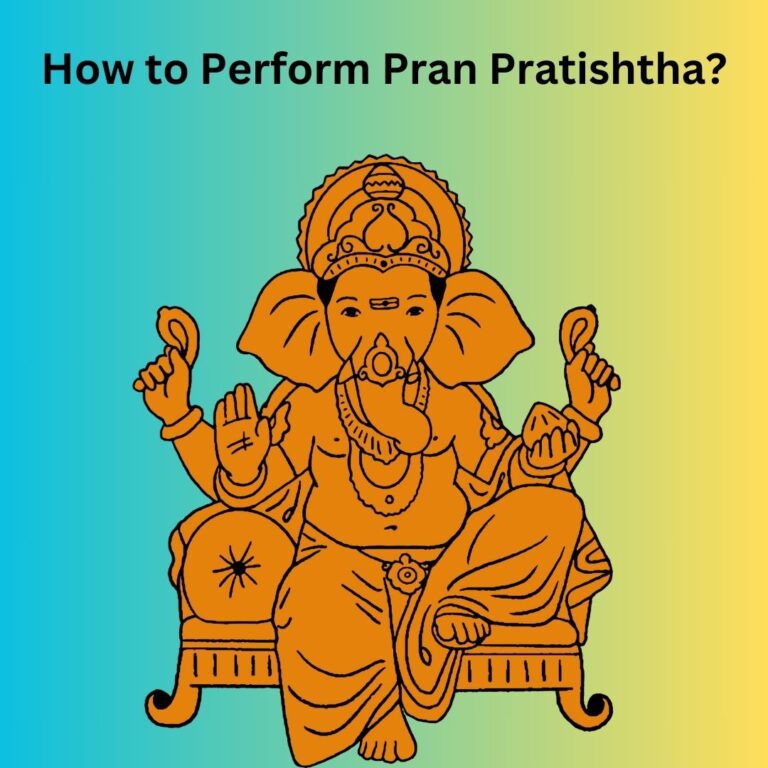How to Perform Pran Pratishtha- step by step guide provided here. Pran pratishtha literally means “establishment of the life force” in Sanskrit.
In this blog post, we will explain the significance and benefits of pran pratishtha or Murti Sthapana, and provide a step-by-step guide on how to perform Pran Pratishtha. We will also share some tips and best practices to make your pran pratishtha ceremony successful and auspicious.
Read more Ram Mandir in Ayodhya 2024: Everything You Need to Know
Read more Ayodhya Ram Mandir Opening Date 2024: Everything You Need to Know
Read more Ram Mandir Pran Pratishtha Date: A Monumental Moment for India
What is Pran pratishtha meaning?
Pran pratishtha is a sacred ritual in Hinduism and Jainism that consecrates an idol or statue of a deity in a temple after sanctification. It is believed that by performing this ritual, the deity is invited to reside in the idol and bless the devotees. Pran pratishtha (Murti Sthapana) literally means “establishment of the life force” in Sanskrit.

Why Pran Pratishtha is Important?
Pran pratishtha (Murti Sthapana) is an important ritual for several reasons:
- It transforms an ordinary idol into a living representation of the deity, making it a suitable object of worship and devotion.
- It infuses the idol with the divine energy and presence of the deity, creating a sacred connection between the devotee and the god.
- It sanctifies the temple and the surrounding area, making it a holy place for spiritual activities and rituals.
- It attracts positive vibrations and blessings from the deity, enhancing the well-being and prosperity of the devotees and the community.
What is the history of Pran Pratishtha?
The ritual of Pran pratishtha (Murti Sthapana) is practiced in Hinduism and Jainism, and has a long history dating back to ancient times.
According to some sources, the origin of pran pratishtha can be traced to the Vedic period, when the fire altar (agni kund) was considered as the abode of the gods. The fire was invoked and worshipped with mantras and offerings, and was believed to carry the prayers and wishes of the devotees to the heavens.
Later, the concept of pran pratishtha (Murti Sthapana) evolved with the emergence of idol worship, which became popular in the post-Vedic period. The idols were made of various materials, such as metal, stone, wood, or clay, and were carved or molded in the likeness of the gods and goddesses.
The idols were then consecrated with mantras and rituals, infusing them with the life force and energy of the deity. The idols were then installed in temples, where they were worshipped and revered by the devotees.

Benefits of Pran Pratishtha
Pran pratishtha has many benefits for the devotees who perform it or participate in it:
- It increases the faith and devotion of the devotees, as they witness the manifestation of the deity in the idol.
- It grants the wishes and desires of the devotees, as they offer their prayers and offerings to the deity.
- It removes the obstacles and difficulties in the life of the devotees, as they seek the protection and guidance of the deity.
- It purifies the mind and soul of the devotees, as they experience the grace and bliss of the deity.
- It enhances the spiritual growth and enlightenment of the devotees, as they meditate and contemplate on the attributes and teachings of the deity.
How to Perform Pran Pratishtha (Murti Sthapana)?
Pran pratishtha (Murti Sthapana) is a complex and elaborate ritual that requires the assistance of a qualified priest or purohit. The ritual may vary depending on the tradition, sect, and deity involved, but the general steps are as follows:

Step 1: Preparation
- The first step is to prepare the idol, the temple, and the materials required for the ritual.
- The idol should be made of a suitable material, such as metal, stone, wood, or clay, and should be clean and intact.
- The temple should be cleaned and decorated with flowers, lights, and other auspicious items.
- The materials required for the ritual include water, milk, honey, ghee, curd, sugar, fruits, flowers, incense, lamps, sandalwood paste, vermilion, turmeric, sacred thread, clothes, jewelry, and other offerings.
Step 2: Invocation
- The second step is to invoke the deity and request them to accept the idol as their abode.
- The priest recites the appropriate mantras and hymns, and performs the rituals of shuddhi (purification), sankalpa (intention), and nyasa (placement).
- The priest also performs the rituals of avahana (invocation), asana (seating), and pujana (worship) to the idol, offering water, flowers, incense, lamps, and other items.
Step 3: Infusion
- The third step is to infuse the idol with the life force and energy of the deity.
- The priest recites the specific mantras and performs the rituals of prana pratishta (establishment of the life force), chaksu unmilan (opening of the eyes), and netra unmesha (awakening of the vision).
- The priest also performs the rituals of abhisheka (bathing), vastra (clothing), alankara (ornamentation), and naivedya (food offering) to the idol, offering milk, honey, ghee, curd, sugar, fruits, clothes, jewelry, and other items.
Step 4: Celebration
- The fourth step is to celebrate the completion of the ritual and express gratitude to the deity.
- The priest recites the appropriate mantras and hymns, and performs the rituals of aarti (waving of lamps), pradakshina (circumambulation), and pranama (prostration).
- The priest also performs the rituals of visarjana (dismissal), udvasana (farewell), and shanti (peace) to the idol, offering water, flowers, incense, lamps, and other items.
- The devotees then participate in the celebration by singing, dancing, and distributing prasada (sacred food).

Tips and Best Practices for Pran Pratishtha
Here are some tips and best practices to make your pran pratishtha ceremony successful and auspicious:
- Choose an auspicious date and time for the ritual, preferably on a festival or a full moon day, and consult an astrologer or a priest for guidance.
- Choose a suitable idol and temple for the ritual, preferably one that matches the preferences and attributes of the deity, and consult a sculptor or a priest for guidance.
- Choose a qualified priest or purohit for the ritual, preferably one who has experience and knowledge of the tradition, sect, and deity involved, and consult a temple or a community for guidance.
- Participate in the ritual with faith and devotion, and follow the instructions and directions of the priest or purohit.
- Donate generously to the temple and the priest or purohit, and offer your services and support to the temple and the community.
Conclusion
We hope this blog post has helped you understand the significance and benefits of pran pratishtha, and provided a step-by-step guide on how to perform it. Pran pratishtha is a powerful and sacred ritual that can transform your life and bring you closer to the deity of your choice. We wish you all the best for your pran pratishtha ceremony and your spiritual journey.
The process and methods of pran pratishtha have varied over time and across regions, traditions, and sects. However, the basic principle and purpose of pran pratishtha have remained the same: to transform an ordinary idol into a living representation of the deity, and to create a sacred connection between the devotee and the god. Namaste.
Read more Ram Mandir Pran Pratishtha Date: A Monumental Moment for India
Read More 12 Jyotirlinga Name and Place: Know about it
Frequently Asked Questions (FAQs)
What is Pran Pratishtha?
Ans: Pran Pratishtha is a Hindu ritual that involves the installation and consecration of a deity’s idol in a temple or home shrine. It is believed to infuse the idol with life and divine power, making it a suitable recipient for worship.
What are the steps involved in Pran Pratishtha?
Ans: The specific steps can vary depending on the deity and region, but generally, Pran Pratishtha involves:
- Preparation: Selecting an auspicious date and time, preparing the idol and shrine, gathering necessary materials like flowers and incense.
- Invocation: Welcoming the deity with mantras and prayers.
- Prana Pratishtha: Performing specific rituals like pranayama (life force invocation) and nyasa (placement of mantras on the idol) to infuse it with life.
- Abhisheka: Bathing the idol with sacred substances like milk, ghee, and panchamrita.
- Alankar: Adorning the idol with ornaments and clothing.
- Puja: Offering prayers and offerings to the consecrated deity.
What are the benefits of performing Pran Pratishtha?
Ans: Hindus believe that Pran Pratishtha brings various benefits, including:
- Increased spiritual energy and blessings from the deity.
- Improved focus and concentration during worship.
- Enhanced peace and prosperity in the home or temple.
- Strengthening the connection between devotees and the divine.
What are the specific rituals for Pran Pratishtha of different deities?
Ans: Each deity has unique rituals and mantras associated with their Pran Pratishtha. For example, Ganesha puja may involve modaks (sweet dumplings), while Lakshmi puja may involve lotus flowers and gold coins.
How much does Pran Pratishtha cost?
Ans: The cost can vary depending on the complexity of the ceremony, the experience of the purohit (priest), and the location. Generally, it can range from a few thousand rupees to lakhs, depending on your preferences.
What are some common mistakes to avoid during Pran Pratishtha?
Ans: It’s important to consult with a knowledgeable purohit to avoid mistakes like:
- Performing the ceremony on an inauspicious date or time.
- Not following the proper rituals and mantras accurately.
- Showing disrespect to the deity or the rituals.
